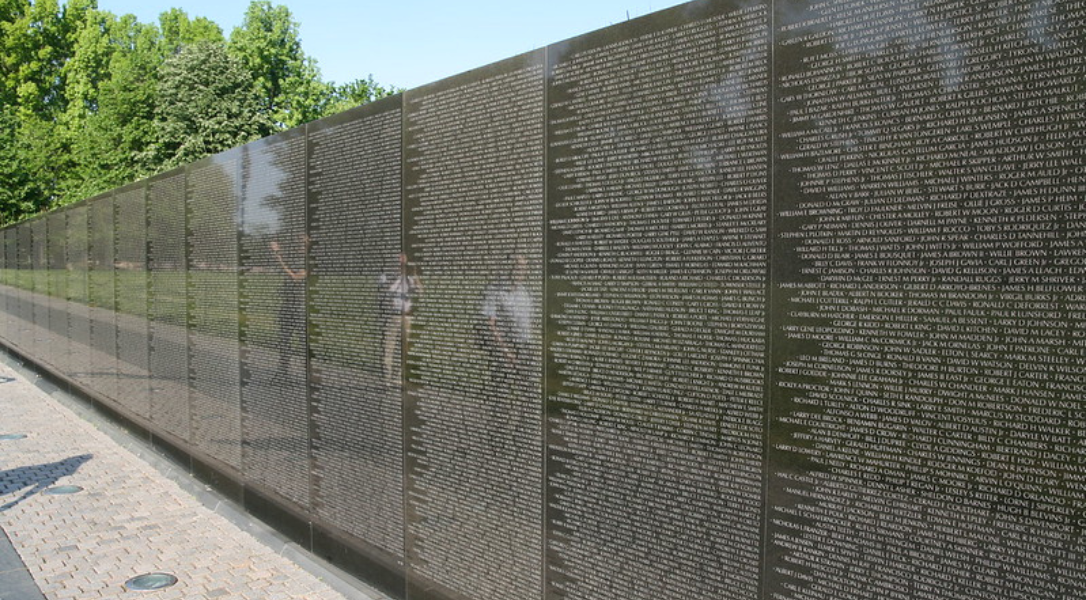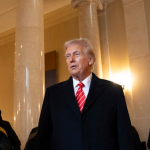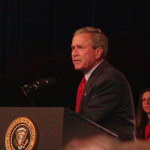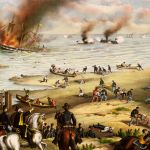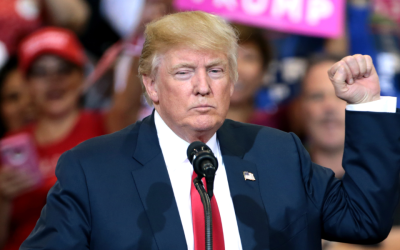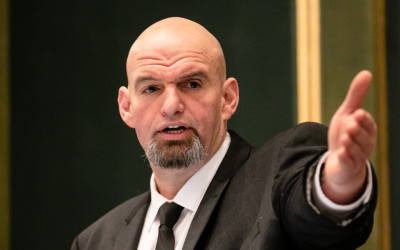Three Key Takeaways:
- The United States’ exit from Vietnam in 1973, following the Paris Peace Agreement, marked the end of a bitter and costly war, but the ceasefire was violated by North Vietnam shortly after, leading to the fall of Saigon in 1975.
- The Vietnam War was one of the most devastating conflicts in U.S. history, costing over $843 billion in 2019 dollars, with 58,200 American casualties and 1,577 still missing as of 2024.
- Despite the painful legacy, U.S.-Vietnam relations have significantly improved since the 1995 normalization of diplomatic ties, with both countries now cooperating on economic, political, and people-to-people levels.
The United States made a painful exit from Vietnam in defeat.
Many Americans thought this communist enemy would remain a bitter foe forever.
But America was shocked to discover this unbelievable truth about Vietnam 52 years later.
Today in History
52 years ago, today, on March 29, 1973, the last United States combat troops exited Vietnam.
The event came two months after the signing of the Paris Peace Agreement on January 27, 1973. The agreement called for a cease fire, the exit of American troops within 60 days, and the release by North Vietnam of all American POW’s.
The terms agreed to would include that the government in the South would remain in place until new elections could be held, and the reunification of the North and South would be carried out via peaceful means.
North Vietnamese troops currently holding positions in the South were not to be reinforced, nor advance.
But the Paris Accords accomplished little more than provide a reason for an exit by the United States. Even before all U.S. forces had departed, the communists violated the cease-fire.
Less than a year later, the North Vietnamese were applying relentless military pressure and advancing on all fronts within the South.
Ultimately, the effort by the United States to prevent South Vietnam from becoming a communist state failed, for on April 30, 1975, Saigon and the last resistance in the South crumbled.
The cost of war
The United States had gotten involved in Vietnam with a goal of preventing the spread of communism into Southeast Asia. The goal was to support the South Vietnamese government and contain the growing influence of communist North Vietnam. It was part of a larger Cold War strategy of restraining communist expansion.
The U.S. was directly involved in the war from 1964 until 1973. They had been indirectly involved since the 1950s, providing military advisors and material support to the South Vietnamese government.
Before Afghanistan, Vietnam was the longest conflict in American history.
Two decades of military intervention and bankrolling friendly regimes cost the U.S. $843 billion in 2019 dollars.
But more importantly, of the over three million American soldiers that served, 58,200 perished. For every soldier killed six had been wounded – 150,000 seriously.
And as of April 2024, there were still 1,577 Americans missing and unaccounted for from the war. This includes 1,237 in Vietnam, 285 in Laos, and 48 in Cambodia.
The war was costly to both sides, with an estimated 1.1 million North Vietnamese and Viet Cong fighters being killed. Civilian casualties range as high as 2 million.
For the United States, the Vietnam War represents a painful legacy of bitterness and division. Millions of Americans saw it as an unjust war that the country had no business being involved in.
And for those that served, it was an exasperating experience as they were ignored or treated with hostility.
It would be 1982 before veterans were recognized for the sacrifices they had made, and that came with the building of the Vietnam Memorial.
Visiting “The Wall” was a deeply moving experience, and only then could Americans start the long road of laying to rest all the scars of Vietnam, which had long divided the country.
Straying from the Founding Fathers
The Founding Fathers were very clear on how they believed America should deal with foreign countries.
When President George Washington penned his famous Farewell Address in 1796, he wrote what he called, “The great rule of conduct in regard to foreign nations.” He said, “Interweaving our destiny” with other nations would just “entangle our peace and prosperity in the toils of European ambition, rivalship, interest, humor, or caprice.”
Washington was a firm believer that America should undertake economic pursuits with the nations of the world but remain strictly neutral in its squabbles.
On July 4, 1921, John Quincy Adams, as Secretary of State under President James Monroe, addressed Congress on foreign policy. He affirmed Washington’s “Great Rule” by saying that America “goes not abroad, in search of monsters to destroy. She is the well-wisher to the freedom and independence of all. She is a champion and vindicator only of her own.”
Adams, who had a remarkable career as a diplomat, would go on to become our nation’s 6th President in 1825.
At the end of World War II, President Harry Truman enacted a new “Great Rule” to replace that of the Founder’s. He argued it was crucial “to support free peoples who are resisting attempted subjugation by armed minorities or by outside pressures.”
Thus, from Truman’s viewpoint, it became the job of America to defend the Free World, and its results were the Cold War.
Since the Truman Doctrine began in 1947, the United States has provided global military assistance on a scale never seen before. Over that time, America fought in more foreign wars than any other nation. It is Truman’s Doctrine that dragged America into the Vietnam War.
Unfortunately, too few remember the intentions of the Founding Fathers.
Former Congressman Ron Paul on the 50th Anniversary of the start of the Vietnam War remarked, “We certainly had some good advice in our early history, and we haven’t followed it. Whether it was Washington or Jefferson, they generally talked about a foreign policy of staying out of the internal affairs of other nations and staying out of entangling alliances. That’s 100 percent opposite of what we do.”
Time is healing wounds
Thirty years ago, in 1995, the United States and Vietnam “normalized” diplomatic relations.
Cooperation began on several fronts.
On Washington, D.C.’s side, they began addressing legacy issues that post-war are still affecting the Vietnamese people. This included funds for supporting teams to de-mine and remove unexploded ordnance. It also included efforts to help with the health and environmental effects of the Agent Orange defoliant that US forces widely sprayed during the war.
For its part, Vietnam has been heavily invested in recovering the remains of American servicemen missing in action (MIA’s).
Just two weeks ago on March 4, 2025, Vietnam handed over the remains of two more American servicemen listed as MIA, to the U.S. Full Accounting Joint Task Force (JTF-FA) at Da Nang International Airport.
These remains were found during the 68th joint Vietnam-U.S. search, which was conducted from January 10 to February 5, 2025. They were examined by Vietnamese and American forensic experts in Hanoi.
According to a statement by the Embassy of the Socialist Republic of Vietnam, located here in the U.S., “This is the 85th time Viet Nam has repatriated the remains of American MIAs to the U.S. government since 1973. The remains of 793 American servicemen who died in action during the Viet Nam war have thus far been found.”
The Founding Father’s path to diplomacy has merit
The U.S. Department of State currently says of Vietnam that they are “trusted partners grounded in mutual respect.”
The State Department says of our relationship, “U.S.-Vietnam relations have become increasingly cooperative and comprehensive, evolving into a flourishing partnership that spans political, economic, security, and people-to-people ties.”
That statement would seem to have merit for in 2024, annual trade between the two countries hit $149.6 billion. That ranks Vietnam as the 10th largest trading partner with the United States. U.S. goods exports to Vietnam were up 32.9 percent last year.
As for “people to people ties,” a remarkable 717,000 Americans visited Vietnam in 2023.
Regardless of how people may feel about the legacy of the Vietnam War, with all its resulting death and destruction, the present reality is that the journey that the two countries have taken, from former foes to current friends, has been an incredible achievement. It is a testament to successful diplomacy.
As former Congressman Ron Paul stated when referring to the Founding Fathers’ “Great Rule” on relations with foreign countries on the 50th Anniversary of the start of the Vietnam War, “On the very positive side, [their advice] was to set an example and have a country that defended liberty, and maybe others would want to follow us. As far as dealing with other nations, it was to strive for peace. The best way to achieve that would be through commerce, through trade. So, they were strong believers in that, and I am too.”
Are you enjoying 24/7’s deep dives into recent and not-so-recent history? Would you like to see more stories like this one? If so, send a note to news@247politics.net and let our Editorial Team hear from you today!
Keep an eye on your inboxes every Thursday and Saturday for new editions of “Today in History” from the 24/7 team!

